STOP
7
This roadcut along Fort Riley Blvd.
southwest of Manhattan exposes the
interval from the top of the Roca Shale to the Eskridge
Shale. This locality provide easy access to the complete
thickness of the Grenola Limestone. A detailed description
can be found in Miller and West (1993).
The Grenola is significant in that it
contains the highest
stratigraphic occurrence of a conodont-rich black shale in the Lower
Permian. Such black shales are common within the upper
Pennsylvanian where they typically contain abundant non-skeletal
phosphate nodules. The loss of such facies in the Lower
Permian is one of the lithologic trends associated with both a general
shallowing and increasing aridity throughout the Permian. The
two "true" black shales in the sequence are the thin black shales in
the Burr Limestone and at the base of the Neva Limestone.
Both of these shales have skeletal phosphatic lags at their bases with
abundant fish bone.
This locality also provides a good
opportunity to examine a natric
paleosol horizon at the top of the Salem Point Shale Mbr (see McCahon
& Miller, 1997 for descriptions and photos) (Fig.
28). The columnar peds are prominently developed and their
domed-shaped tops can be viewed on fallen blocks.
Significantly, a meter-thick gypsum bed is present at the base of the
Salem Point in the subsurface.
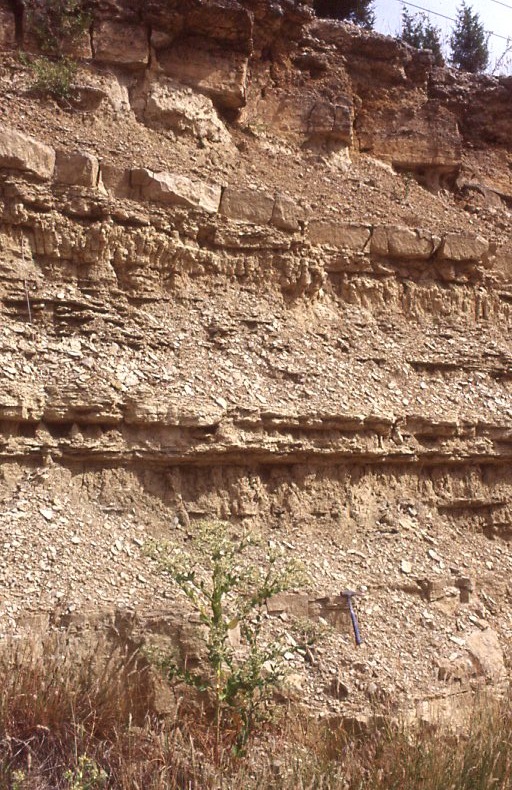
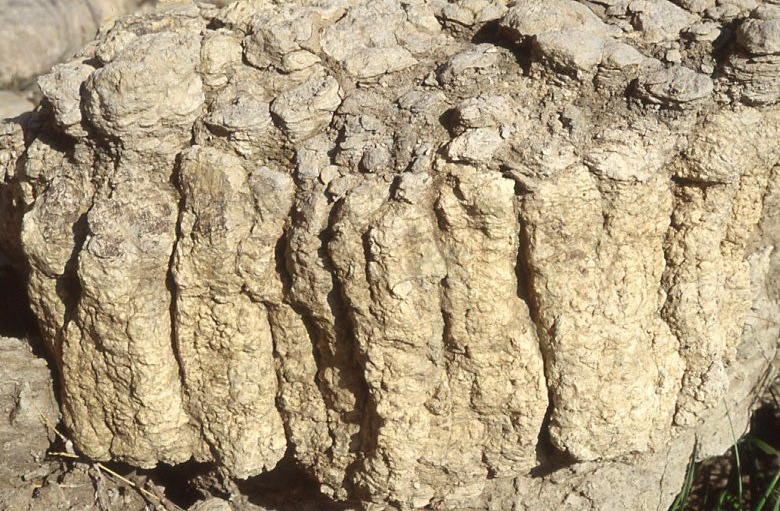
Figure 28. The upper Salem Point Member of the Grenola Limestone
includes two natric paleosol horizons. The diagnostic rounded columnar
ped structures shown in the lower photo are produced by subaerial
exposure under the influence of high sodium concentrations.
STOP
8
Like the Tuttle Creek spillway, the
emergency spillway at the Milford Reservoir also experienced
significant erosion during the floods of 1993. In this case,
the erosion extensively exposed the entire Barnestone
Limestone. A detailed description of this exposure is
available from the Kansas Survey (Miller & Twiss,
1994). The U.S Army Corps of Engineers supervises this site,
and collection of in situ geological samples is by permit
only. The area west of K 244 is designated "No Trespassing"
because it is an impact zone for small-arms fire. For
personal safety, previous arrangements must be made with the Geary
County Gun Club before proceeding west of K-244.
The Barneston is the thickest (22
meters) carbonate unit within the Permian section of Kansas, and is the
most prominent cliff-former in the Flint Hills Physiographic
Province. The Florence Limestone Member, comprising the lower
10.5 meters of the Barneston, contains closely-spaced nodular chert
layers in a skeletal wackestone to packstone (Fig. 29). It is
the faunally most diverse member and dominated by productid
brachiopods, fenestrate, ramose and encrusting bryozoans, crinoids, and
echinoids.
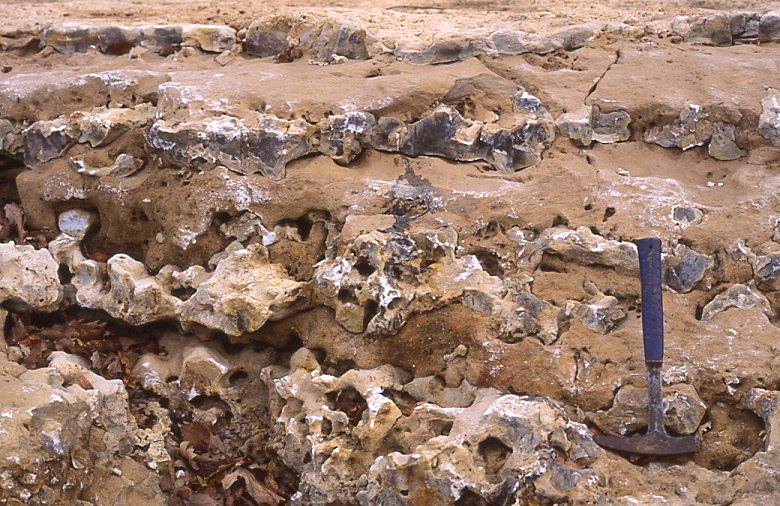
Figure 29. Irregular chert layers within the Florence Limestone Member.
These chert nodule layers appear to form burrow-like networks.
The morphology of the nodular chert
layers of the Florence Limestone resembles that of complex burrow
systems similar to Thalassinoides (Fig. 30). On many surfaces they are
joined to form continuous polygonal networks. Commonly, two or more of
the chert layers are joined by vertical and inclined chert masses to
form multi-storied networks. The apparent localization of silica
replacement within burrows may have been a result of higher porosity
and permeability within the skeletal burrow fills. Unsilicified
Rhizocorallium and some Thalassinoides-like burrow systems occur in a
few beds. These burrow systems are filled with skeletal debris coarser
than the matrix and are probably similar in origin to the "tubular
tempestites" described from modern shallow marine environments.
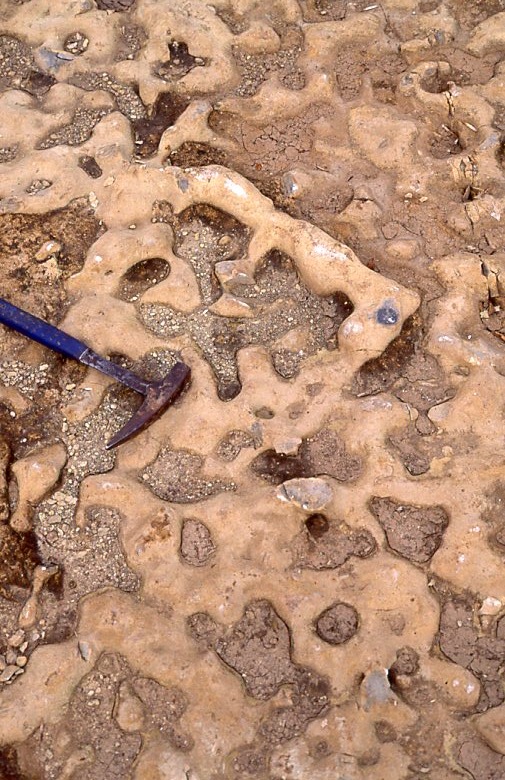
Figure 30. Bedding plane view of nodular chert horizon within Florence
Limestone Member. Note the borrow-like geometries.
Vertically connected nodular chert
layers form multi-storied galleries that are consistently 20 to 30 cm
thick. These galleries are stacked, and although typically separated by
less than 10 cm, do not appear to be interconnected. This would seem to
suggest relatively rapid sediment aggradation followed by the
development of extensive burrow networks. Filling of pre-existing
burrow networks by skeletal debris may have accompanied these
sedimentation events. The stacked silicified burrow networks are in
turn organized into meter-scale cycles that are separated by clayey
units of a few tens of centimeters or less. Based on previous work on
Lower Permian cyclicity, these meter-scale cycles may record climatic
fluctuations in which clean limestones record arid or semi-arid
conditions, and the clay-rich carbonates record somewhat wetter
climates when terrigenous clastics were flushed into the basin.
Above the Florence Mbr. is the thin
argillaceous Oketo Shale Mbr that is in-turn overlain by the Fort Riley
Limestone Mbr. At the base of the Fort Riley is a massive limestone bed
that is a prominent ridge-forming unit in the area. The Fort Riley Mbr
becomes less fossiliferous and more dolomitic upward. A variety of
sedimentologic features, including abundant molds of anhydrite nodules
and gypsum rosettes (Fig. 31), laminated dolomitic mudstone (Fig, 32),
polygonal desiccation cracks, tepee structures and boxwork structures
(Fig. 33), strongly suggest upward shallowing and the development of
evaporitic sabkha conditions.
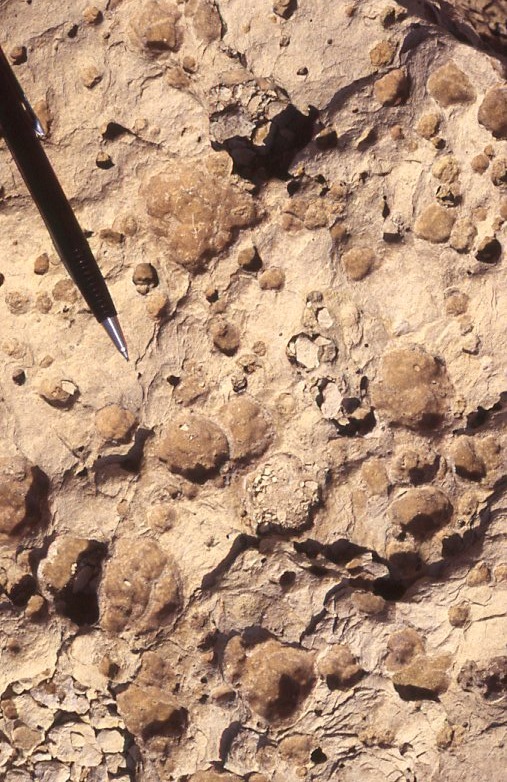
Figure 31. Pseudomorphs after nodular anhydrite indicating evaporitic
conditions.
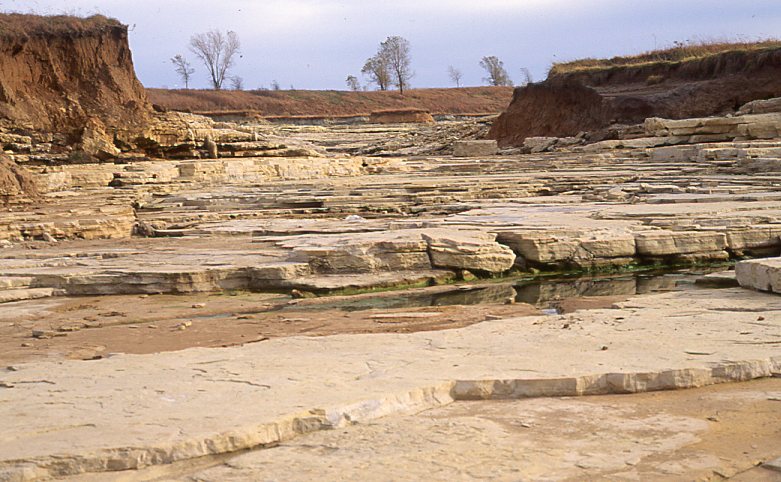
Figure 32. Laminated dolomitic mudstones of the upper Fort Riley
Member. Bedding plane surfaces may have nearly monospecific pavements
of small Permorhus bivalves.
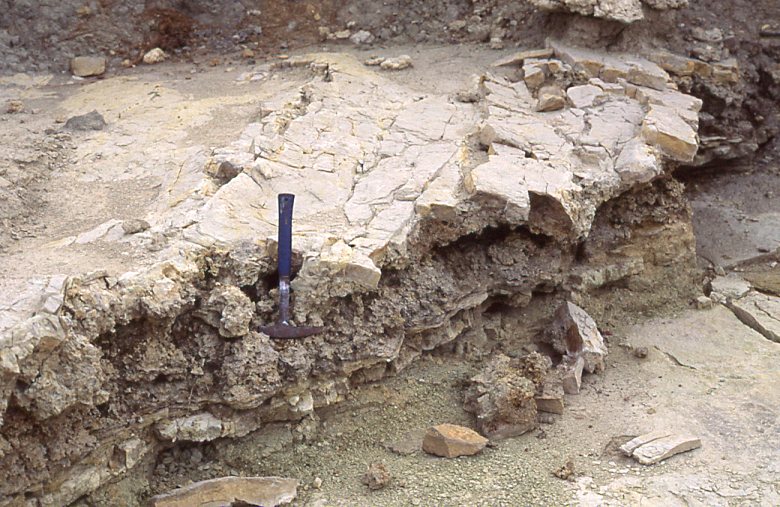
Figure 33. Tepee structures near the base of the Holmesville Shale
Member overlying the Fort Riley Limestone Member. These structures are
associated with boxwork structures and anhydrite nodule molds all
indicating evaporitic sabkha-like environments.
REFERENCES
Algeo, T.J. and Wilkinson, B.H., 1988, Periodicity of mesoscale
Phanerozoic sedimentary cycles and the role of Milankovitch orbital
modulation, Journal of
Geology, v. 96, p. 313-322.
Birkeland, P.W., 1984, Soils
and Geomorphology: New York, Oxford University Press, 372p.
Blodgett, R.H., 1988, Calcareous paleosols in the Triassic Dolores
Formation, southwestern Colorado. IN, Reinhardt, J. and
Sigleo, W.R. (eds.), Paleosols
and Weathering through Geologic Time: Principles and Applications:
Geological Society of America Special Publication 216, p.103-121.
Busch, R.M., and West, R.R., 1987, Hierarchical genetic stratigraphy: a
framework for paleoceanography: Paleoceanography,
v. 2, p. 141-164.
Cecil, C.B., 1990, Paleoclimate controls on stratigraphic repetition of
chemical and siliciclastic rocks: Geology, v. 18, p. 533-536.
Chowns, T.M., and Elkins, J.E., 1974, The origin of quartz geodes and
cauliflower cherts through the silicification of anhydrite nodules: Journal of Sedimentary Petrology,
v. 44, p. 885-903.
Cross, A.T. and Phillips, T.L., 1990, Coal-forming plants through time
in North America: International
Journal of Coal Geology, v. 16, p. 1-46.
Crowell, J.C., 1978, Gondwanan glaciation, cyclothems, continental
positioning, and climate change: American
Journal of Science, v. 278, p. 1345-1372.
Crowley, T.J. and North, G.R., 1991, Paleoclimatology,
Oxford Monographs on Geology and Geophysics 18: New York, Oxford
University Press, 339 p.
Denton, G.H. and Hughes, T.J., 1983, Milankovitch theory of ice ages:
hypothesis of ice-sheet linkage between regional insolation and global
climate: Quaternary
Research, v. 20, p. 125-144.
DiMichele, W.A. and Aronson, R.B., 1992, The Pennsylvanian - Permian
vegetational transition: A terrrestrial analogue to the
onshore-offshore hypothesis: Evolution,
v. 46, p. 807-824.
Elias, M.K., 1937, Depth of deposition of the big Blue (Late Paleozoic)
sediments in Kansas: Bulletin
of the Geological Society of America, v. 48, p. 403-432.
Fairbridge, R.W., 1986, Monsoons and paleomonsoons: Episodes, v. 9, p.
143-149.
Folk, R.L., and Pittman, J.S., 1971, Length-slow chalcedony: a new
testament for vanished evaporites: Journal
of Sedimentary Petrology, v. 41, p. 1045-1058.
Frakes, L.A., Francis, J.E., and Syktus, J.I., 1994, Climate Modes of
the Phanerozoic: Cambridge: Cambridge University Press, 274 p.
Goodwin, P.W. and Anderson, E.J., 1985, Punctuated aggradational
cycles: general hypothesis of episodic stratigraphic accumulation: Journal of Geology,
v. 93, p.515-533.
Hattin, D.E., 1957, Depositional environment of the Wreford
megacyclothem (Lower Permian) of Kansas: Kansas Geological Survey Bulletin,
v. 124, 150p.
Heckel, P.H., 1986, Sea-level curve for Pennsylvanian eustatic marine
transgressive-regressive depositional cycles along midcontinental
outcrop belt, North America: Geology, v. 14, p.
330-334.
Imbrie, J., 1955, Quantitative lithofacies and biofacies study of
Florena shale (Permian) of Kansas: Bulletin
of the American Association of Petroleum Geologists, v.
39, p. 649-670.
Imbrie, J., Laporte, L.F. and Merriam, D.F., 1964, Beattie Limestone
facies (Lower Permian) of the northern mid-continent: Kansas Geological Survey Bulletin,
v.169, no.1, p. 219-238.
Jewett, J.M., 1933, Evidence of cyclic sedimentation in Kansas during
the Permian Period: Kansas
Academy of Science Transactions, v. 36, p. 137-140.
Joeckel, R.M., 1991, Paleosol stratigraphy of the Eskridge Formation:
Early Permian pedogenesis and climate in southeastern Nebraska: Journal of Sedimentary Petrology,
v. 61, p. 234-255.
Johnson, S.Y., 1989, Significance of loessite in the Maroon Formation
(Middle Pennsylvanian to Lower Permian), Eagle Basin, northwest
Colorado: Journal of
Sedimentary Petrology, v. 59, p. 782-791.
Kutzbach, J.E. and Gallimore, 1989, Pangean
climates: megamonsoons of the megacontinent: Journal of Geophysical Research,
v. 94, p. 3341-3357.
Kutzbach, J.E., and Guetter, P.J., 1984, The sensitivity of monsoon
climates to orbital parameter changes for 9000 years BP: experiments
with the NCAR general circulation model. IN,
Berger, A., Imbrie, J, Hays, J., Kukla, G., and Saltzman, B. (eds.), Milankovitch and Climate, Part 2:
Dordrecht, Holland, D. Reidel Publishing Company, p. 801-820.
Lane, N.G., 1958, Environment of deposition of the Grenola Limestone
(Lower Permian) in southern Kansas: Kansas Geological Survey Bulletin,
v. 130, no.3, p. 117-164.
Laporte, L.F., 1962, Paleoecology of the Cottonwood Limestone
(Permian), northern mid-continent: Geological
Society of America Bulletin, v. 73, p. 521-544.
Mack, G.H., 1992, Paleosols as an indicator of climatic change at the
Early-Late Cretaceous boundary, southwestern New Mexico: Journal of Sedimentary Petrology,
v. 62, p. 483-494.
Mack, G.H., James, W.C., and Monger, H.C., 1993, Classification of
paleosols: Geological
Society of America Bulletin, v. 105, p. 129-136.
Marriott, S.B., and Wright, V.P., 1993, Palaeosols as indicators of
geomorphic stability in two Old Red Sandstone alluvial suites, South
Wales: Journal
of the Geological Society, London, v. 150, p. 1109-1120.
McCahon, T. J., and Miller, K. B., 1997, Climatic significance of
natric horizons in Permian (Asselian) palaeosols of north-central
Kansas, USA: Sedimentology,
v. 44, p. 113-125.
McCrone, A.W., 1963, Paleoecology and biostratigraphy of the REd Eagle
Cyclothem (Lower Permian) in Kansas: Kansas Geological Survey Bulletin,
v. 164, 114p.
Miller, K.B., 1994, Tuttle Creek Lake spillway exposure: cycle patterns
and paleosol profiles: Kansas
Geological Survey Open-File Report 94-23, 26 p.
Miller, K.B. and Twiss, P.C., 1994, Rocks of the Milford Lake spillway:
facies, cycles, and depositional environments: Kansas Geological Survey
Open-File Report 94-47.
Miller, K.B. and West, R.R., 1993, A reevaluation of Wolfcampian
cyclothems in northeastern Kansas: significance of subaerial exposure
and flooding surfaces: Kansas
Geological Survey Bulletin, v. 235, p. 1-26.
Miller, K.B., and West, R.R., 1998, Identification of sequence
boundaries within cyclic strata of the Lower Permian of Kansas, USA:
Problems and alternatives: The
Journal of Geology, v. 106, p. 119-132.
Miller, K.B., McCahon, T.J., and West, R.R., 1996, Lower Permian
(Wolfcampian) paleosol-bearing cycles of the U.S. midcontinent:
evidence of climatic cyclicity: Journal of Sedimentary Research,
v. 66, p. 71-84.
Parrish, J.T., 1993, Climate of the supercontinent Pangea: Journal of Geology,
v. 101, p. 215-233.
Parrish, J.T., and Peterson, F., 1988, Wind directions predicted from
global circulation models and wind directions determined from eolian
sandstones of the western United States -- A comparison: Sedimentary Geology,
v. 56, p. 261-282.
Patzkowsky, M.E., Smith, L.H., Markwick, P.J., Engberts, C.J., and
Gyllenhaal, E.D., 1991, Application of the Fujita-Ziegler paleoclimate
model: Early Permian and Late Cretaceous examples: Palaeogeography,
Palaeoclimatology, Palaeoecology, v. 86, p. 67-85.
Perlmutter, M.A. and Matthews, M.D., 1989, Global cyclostratigraphy --
a model. IN, Cross, T.A. (ed.), Quantitative Dynamic Stratigraphy:
Englewood Cliffs, New Jersey, Prentice Hall, p. 233-260.
Phillips, T.L. and Peppers, R.A., 1984, Changing patterns of
Pennsylvanian coal-swamp vegetation and implications of climatic
control on coal occurrence: International
Journal of Coal Geology, v. 3, p. 205-255.
Phillips, T.L., Peppers, R.A. and Dimichele, W.A., 1985, Stratigraphic
and interregional changes in Pennsylvanian coal-swamp vegetation:
environmental inferences: International
Journal of Coal Geology, v. 5, p. 43-110.
Retallack, G.T., 1988, Field recognition of paleosols, IN, Reinhardt,
J. and Sigleo, W.R. (eds.), Paleosols and Weathering through Geologic
Time: Principles and Applications: Geological
Society of America Special Publication 216, p.1-20.
Retallack, G.T., 1990, Soils
of the Past: An Introduction to Paleopedology: Boston,
Unwin Hyman, 520 p.
Ritter, S.M., 1995, Upper Missourian - Lower Wolfcampian (upper
Kasimovian - lower Asselian) conodont biostratigraphy of the
midcontinent, USA: Journal
of Paleontology, v. 69, p. 1139-1154.
Rowley, D.B., Raymond, A., Parrish, J.T., Lottes, A.L., Scotese, C.R.
and Ziegler, A.M., 1985, Carboniferous paleogeographic,
phytogeographic, and paleoclimatic reconstructions: International Journal of Coal
Geology, v. 5, p. 7-42.
Scotese, C., 1986, Atlas
of Paleozoic Basemaps: Paleoceanographic Mapping Project:
Austin, University of Texas Institute for Geophysics, Technical Report
66, p.1-23.
Smith, G.A., 1994, Climatic influences on continental deposition during
late-stage filling of an extensional basin, southeastern Arizona: Geological Society of America
Bulletin, v. 106, p. 1212-1228.
Soil Survey Staff, 1992, Keys
to Soil Taxonomy, 5th edition: Soil Management Support
Services Technical Monograph No. 19 : Blacksburg, Virginia, Pocahontas
Press, Inc., 541 p.
Soreghan, G. S., 1992, Preservation and paleoclimatic significance of
eolian dust in the ancestral Rocky Mountains province: Geology, v. 20, p.
1111-1114.
Van Wagoner, J.C., Posamentier, H.W., Mitchum, R.M., Vail, P.R., Sarg,
J.F., Loutit, T.S., and Hardenbol, J., 1988, An overview of the
fundamentals of sequence stratigraphy and key definitions.
IN, Wilgus, C.K., Hastings, B.S., Kendall, C.G.St.C., Posamentier,
H.W., Ross, C.A., and Van Wagoner, J.C. (eds.), Sea-level Changes -- An
Integrated Approach: SEPM Special Publication 42, p. 39-45.
Veevers, J.J., and Powell, C.McA., 1987, Late Paleozoic glacial
episodes in Gondwanaland reflected in transgressive-regressive
depositional sequences in Euramerica: Geological Society of America
Bulletin, v. 98, p. 475-487.
West, R. R., Archer, A. W., and Miller, K. B., 1997, The role of
climate in stratigraphic patterns exhibited by late Palaeozoic rocks
exposed in Kansas: Palaeogeography,
Palaeoclimatology, Palaeoecology, v. 128, p. 1-16.
West, R.R., and Twiss, P.C., 1988, The Crouse Limestone in
north-central Kansas -- lateral changes and paleoecological analysis: Geological Society of America
Centennial Field Guide, South-Central Section, p. 29-34.
West, R.R., Miller, K.B., and Watney, W.L., 2010, The Permian System in
Kansas: Kansas Geological Survey Bulletin 257, 82p.
Wanless, H.R., and Weller, J.M., 1932, Correlation and extent of
Pennsylvanian cyclothems: Bulletin
of the Geological Society of America, v. 47, p. 1003-1016.
Wilson, L., 1973, Variations in mean annual sediment yield as a
function of mean annual precipitation: American Journal of Science,
v. 278, p. 335-349.
Witzke, B.J., 1990, Palaeoclimatic constraints for Palaeozoic
Palaeolatitudes of Laurentia and Euramerica. IN, McKerrow,
W.S., and Scotese, C.R. (eds.), Palaeozoic Palaeogeography and
Biogeography: Geological
Society of London Memoir No. 12, p. 57-73.
GO TO KEITH MILLER'S HOMEPAGE
HERE






